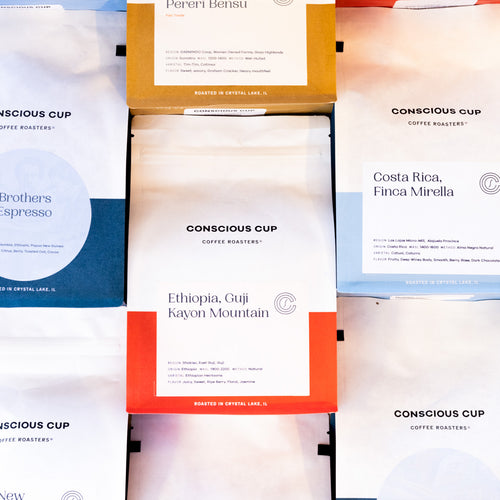Buy 2 Bags of Coffee, Save 10%, Buy 4 Save 20% Through Dec. 31!
Buy More, Save More

Flores, Indonesia
The highest peak in Flores is just over 1700 masl, and most coffee production is concentrated in the 1000-1300 masl range by intercropping smallholder producers. Wet-hulled processing, like Sumatra, has been a common practice, but a rising number of cooperatives and producers are applying higher-quality processes to their coffees. Today, Washed Processing is the most common practice by far, but Flores’ specialty coffee is predominantly grown above 1400 meters in the Manggarai region, with varieties like Kartika and Yellow Caturra.
Flores, a long and narrow island in the eastern Indonesian archipelago, features a mountainous terrain dotted with both active and inactive volcanoes, surrounded by fertile plains cultivated with rice fields. The island's history with Europe dates back to the early 16th century when Portuguese traders and missionaries named it Cabo de Flores, or Cape of Flowers, introducing Catholicism while many locals maintained traditional animist beliefs. In 1854, Portugal relinquished its claims on Flores, incorporating the island into the Dutch East Indies, where the Dutch expanded coffee cultivation, although Flores was one of the last Indonesian islands to begin coffee exportation.
Coffee cultivation on Flores predominantly occurs between 1000-1300 meters above sea level (masl) by smallholder producers who initially practiced wet-hulled processing similar to Sumatra. However, the shift towards higher-quality coffee processes is evident, particularly in the Manggarai region, located above 1400 masl, where specialty coffees, including varieties like Kartika and Yellow Caturra, are increasingly grown. Despite the island's late start in coffee exportation, these advancements indicate a significant improvement in the quality of Flores coffee, which is now largely processed using the washed method.
The Manggarai region, covering much of western Flores and its adjacent islands, is divided into three regencies and characterized by its mountainous landscape with peaks formed by the Ranakah volcano and terraced rice fields. Coffee production here is focused mainly between 1300 and 1700 masl in the central to eastern parts of Manggarai. The local economy is bolstered by tropical farming, including the cultivation of rice, legumes, vegetables, tobacco, corn, and coffee. The region experiences a rainy season from October to February and a dry season from March to September, influencing agricultural practices and crop yields.
Guava
Citrus
Fruit-Like Sweetness
Region
Flores, Indonesia
Farm
Tuang Coffee
Method
Washed
Varietal
Kartika, Timor Hybrid, Caturra
MASL
1300-1700


Papua New Guinea, Keto Tapasi
$19

